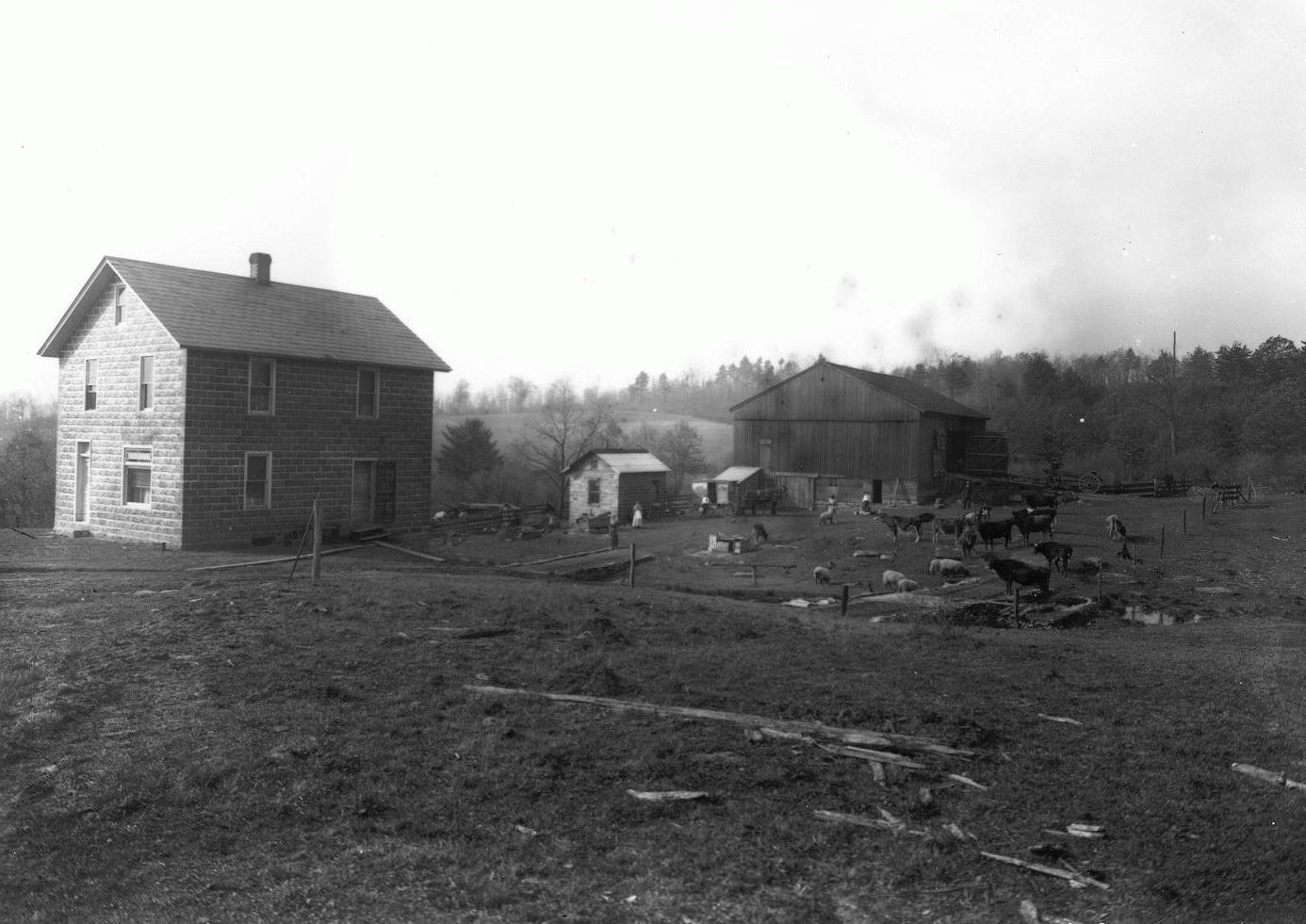 Matson Insurance is partnering with Jefferson County History Center to offer exploreJeffersonpa.com readers a look into Jefferson County’s past. Today, “Farming Without John Deere” is being showcased.
Matson Insurance is partnering with Jefferson County History Center to offer exploreJeffersonpa.com readers a look into Jefferson County’s past. Today, “Farming Without John Deere” is being showcased.
(Pictured above: Some farms in the early years of the twentieth century, when mechanization was getting underway, were somewhat primitive.)
The following article was written by Carole A. Briggs, Curator, Jefferson County History Center:
FARMING WITHOUT JOHN DEERE
Traveling the back roads among the county’s Amish settlements gives a person a sense of what farming might have been like before the days of the gasoline-powered engine. Horse drawn plows turn the fields. Seeds drop into the soil from corn planters or by hand. Stacks of hay dot the hillsides.
When the first settlers of European descent arrived around 1800, Native Americans in the area were growing patches of corn. It became an important crop and important food, so much so that historian William J. McKnight wrote that “pone (cornbread) was not used more than thirty days in the month.”
The vegetable we enjoy so much during August and September provided not only pone, hominy, mush, and johnnycake, but fuel, toys, corn cob pipes, and bedding. The ½ acre vegetable patch provided pumpkins, squash, beans, potatoes, cabbage, turnips, muskmelon, and watermelon. By 1830, oats had far outstripped the bushels of wheat, rye, buckwheat, flax, and corn the county produced with potatoes a close second.
Planting these crops required tools. First, perhaps just a rudimentary hoe or even a stick to work the soil, then wooden shovels and hoes. A pioneer may have fashioned a crude wooden plow that could furrow soft ground, and if he’d been wealthy enough to arrive with oxen or horses, he could use animal power rather than his own or his wife’s energy to pull it.
About the same time our pioneer farmers were clearing and tilling 1 out of every 3 acres of land, Charles Newbold, David Peacock, and Jethro Wood were patenting cast-iron plows in New Jersey and New York. It is interesting to note that some early farmers thought metal plows “poisoned the soil” and encouraged weeds! Thomas Jefferson designed a moldboard plow for use at Monticello and later incorporated more and more parts of metal into it. The moldboard of a sidehill plow is reversible making it very good for the rolling hills of Pennsylvania.
By the end of the 19th-century farming was on the way to the mechanization we see today. Reapers, threshers, and combines had been invented. Farmers were experimenting with stream-driven tractors. Fertilizer was in common use and agricultural production increased. Today fewer farmers farm less land than more than a century ago, but earn about 33% more per acre! And thanks to improvements in farm tools, with much less manual labor!
Copyright@Jefferson County Historical Society, Inc.
Throwback Thursday is brought to you by Matson Insurance in Brookville.
Submitted by the Jefferson County History Center.
Copyright © 2024 EYT Media Group, Inc. All rights reserved. Any copying, redistribution or retransmission of the contents of this service without the express written consent of EYT Media Group, Inc. is expressly prohibited.









